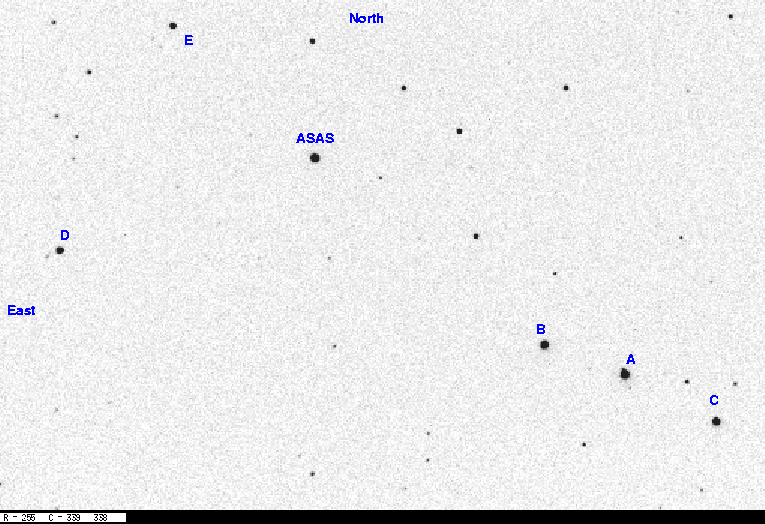
On the night of Sept 18/19, 2004 EDT, Tracy Davis and I used the RIT Observatory's 12-inch Meade telescope and SBIG ST8 CCD camera to monitor the newly-discovered cataclysmic variable star ASAS 002511; it's a hot new item under study by the Center for Backyard Astrophysics.
The plan:
Notes from the night
Here's a chart of the field of ASAS 002511 taken on this night. The field is about 20 arcminutes wide. Click on the picture for a larger version.
Arne Henden's calibration of stars in the field indicates
I measured the instrumental magnitude of each star with aperture photometry, using a radius of 5 pixels = 9.3 arcseconds, and sky defined by an annulus around each star. Following the procedures outlined by Kent Honeycutt's article on inhomogeneous ensemble photometry, I used all stars available in each image to define a reference frame, and measured each star against this frame.
Below is a graph of the scatter in differential magnitude versus magnitude. Note that the brightest stars included in the solution may be slightly saturated. I made a series of preliminary solutions and discarded stars which had large scatter due to close companions, or due to their position near the edge of the frame, etc.
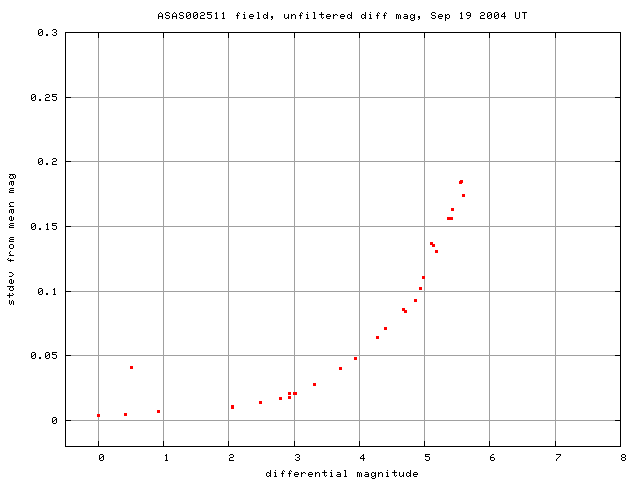
ASAS 002511 is the bright star with the larger-than-normal scatter in this diagram. The brightest stars have a formal scatter of 0.004 and 0.005 mag, respectively.
Light curves for selected stars in the field are shown below. ASAS 002511, in green, is clearly variable.
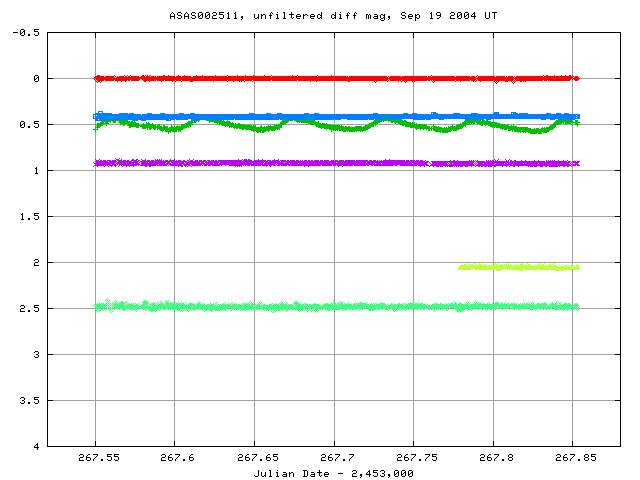
Here's a closeup of the variation in ASAS 002511 itself:
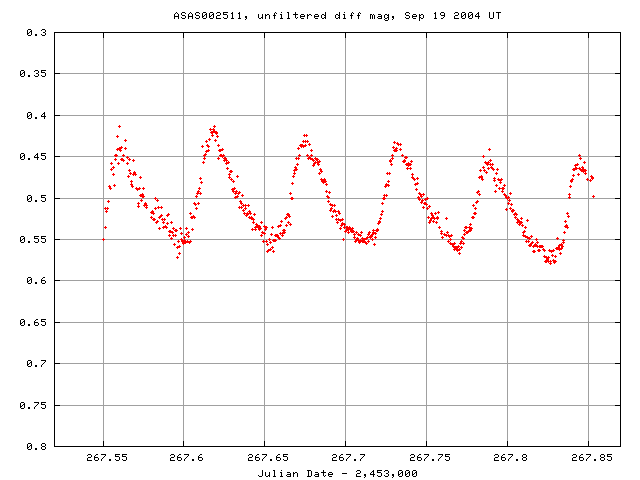
Michael Koppelman also observed ASAS 002511 on this night, and sends this message ...
I saw you had your data online. I combined your data and my data and did a Fourier analysis and got P=0.0573 +/- 0.0003, just slightly different than I got with only my data. Using your data alone I get P=0.0573 +/- 0.0002. Hmmm. Apparently longer runs of higher quality data are better! ;)... and this graph:
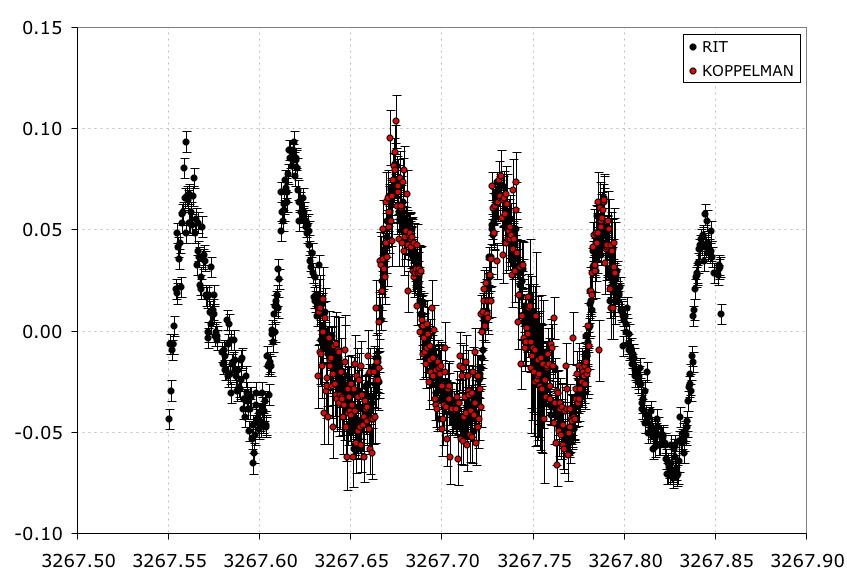
I've made a table of the measurements themselves, with three different flavors of time. The differential unfiltered magnitudes from the ensemble solution has been shifted so that star "B" in my chart, GSC 559-1272, has value 11.485, matching its V-band magnitude as determined by Arne Henden.
Here's the start of the table:
# Measurements of ASAS002511 made at RIT Obs, Sep_ 19, 2004 UT, # made by Michael Richmond and Tracy Davis. # All data taken with 12-inch LX-200 + no filter + SBIG ST-8 CCD # no focal reducer, so at native f/10 # Each exposure 15 seconds long; the tabulated times are midexposure # and accurate only to +/- 1 second. # 'mag' is a differential magnitude based on ensemble photometry # which has been shifted to star GSC 599-1272 has mag=11.485 # (matching Henden's calibration of the star to V=11.485) # # UT day JD-2,450,000 HJD-2,450,000 mag Sep_19.05042 3267.55042 3267.55597 11.620 Sep_19.05126 3267.55126 3267.55681 11.583 Sep_19.05168 3267.55168 3267.55723 11.606 Sep_19.05209 3267.55209 3267.55764 11.586
Last modified 9/19/2004 by MWR.